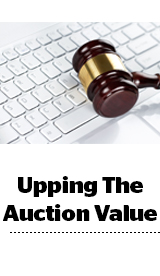 Many industry analysts expect B2B media marketing budgets to finally reach pre-recession levels by the end of 2015, following a drop-off in 2009 that removed almost one out of every $5 spent on B2B outlets.
Many industry analysts expect B2B media marketing budgets to finally reach pre-recession levels by the end of 2015, following a drop-off in 2009 that removed almost one out of every $5 spent on B2B outlets.
And those revenue streams are migrating to programmatic technology and new native strategies to develop brand awareness.
One of the reasons B2B businesses haven’t fully embraced programmatic is because B2B publications were slow to build the tech stacks more common in the consumer-facing publishing industry, said Business.com CEO Tony Uphoff, whose publication works with Krux for programmatic ad serving, but is building out its own ad tech stack.
Because B2B pubs tended to live off lead generation instead of advertising, they weren’t forced to survive by squeezing every half-cent’s worth of efficiency out of their page views.
The shift to programmatic is notable because as recently as last year, trade shows and print advertising accounted for almost 70% of all revenue pulled in by B2B media. B2B publishers have been focused on building ad tech competency in recent months out of a need to diversify away from those aged industry pillars, print and live shows.
Purch, which operates a portfolio of B2B sites, introduced a new native advertising product in late 2014 that has already become “the thing we’re most excited about,” said company CRO Mike Kisseberth. The ad unit takes editorial content that gets good traffic and engagement, strips other ads and highlights aspects that are key for a specific customer.
Purch has also built an internal auction solution, referred to as RAMP, which allows them to do the kind of pre-bid inventory management that is now surfacing as a priority for many B2C publishers.
Business.com has also developed its own auction, which it calls Finch, to go along with a suite of recent native products.
“We see a very, very big business in content we create on behalf of the customer,” Uphoff said.
Even as ad tech products become more important in the B2B world, Kisseberth reinforced that the most value a B2B publisher can draw from its platform isn’t building inventory (i.e., more viewers), it’s funneling people into the demand and lead-generation stage.
David Fortino, VP of audience development at NetLine, a network that connects some 15,000 B2B publishers, from bigger players like Purch to niche bloggers, also stressed the importance of understanding how B2B’s marketing is optimized to a profoundly different outcome, which is obscured if you just try to conceive of it as “sales” or “conversions.”
“There’s no concept of CPM for a company like NetLine ,” said Fortino. “That user funnel, for us, is leading to face-to-face meetings, Skype sessions, an educational process.”
Kisseberth emphasized the same thing, pointing out that the B2B publisher’s elongated marketing relationship with individual users pays off because of how much more valuable the ultimate sale ends up being.
“We’re educating people on decisions that are very expensive,” echoed Fortino. “If you buy a pair of shoes online from some piece of marketing content, that’s fine even if the shoes aren’t great. But you can lose your job and do material harm to your company if you pick the wrong CRM.”
That’s part of why many B2B companies are developing new native strategies, said Uphoff. For clients that are startups or not the brand names that have been B2B’s bread and butter – IBM, Oracle, Adobe, Microsoft, Intel – having solid leads delivered every month doesn’t pay off because they need to build a thorough level of trust.
That means a newfound emphasis on white papers, editorial-style posts and thought leadership opportunities, which all point toward native offers. Uphoff said Business.com’s “brand engagement” (sponsored content) accounts for 35% of the company’s total revenue, with expectations that it will be 50% of revenue in the near future.
And that, bear in mind, is coming in large part from advertising products the company didn’t even offer as recently as 2013.
Another crucial factor is the pool of budgets available to some B2B companies. Unlike consumer publications, B2B outlets target the kind of trade marketing budgets that could otherwise go to reducing prices for in-store sales or for purchasing better shelf position with a merchant.
These under-the-radar expenditures can sometimes outstrip the amount a CPG company spends on advertising in a year.
“B2B is easy to overlook,” said Uphoff. “It isn’t sexy providing the custom content marketers need to sell back-end office processing software. … But it’s profitable, and smart people are seeing that it’s best done programmatically.”














